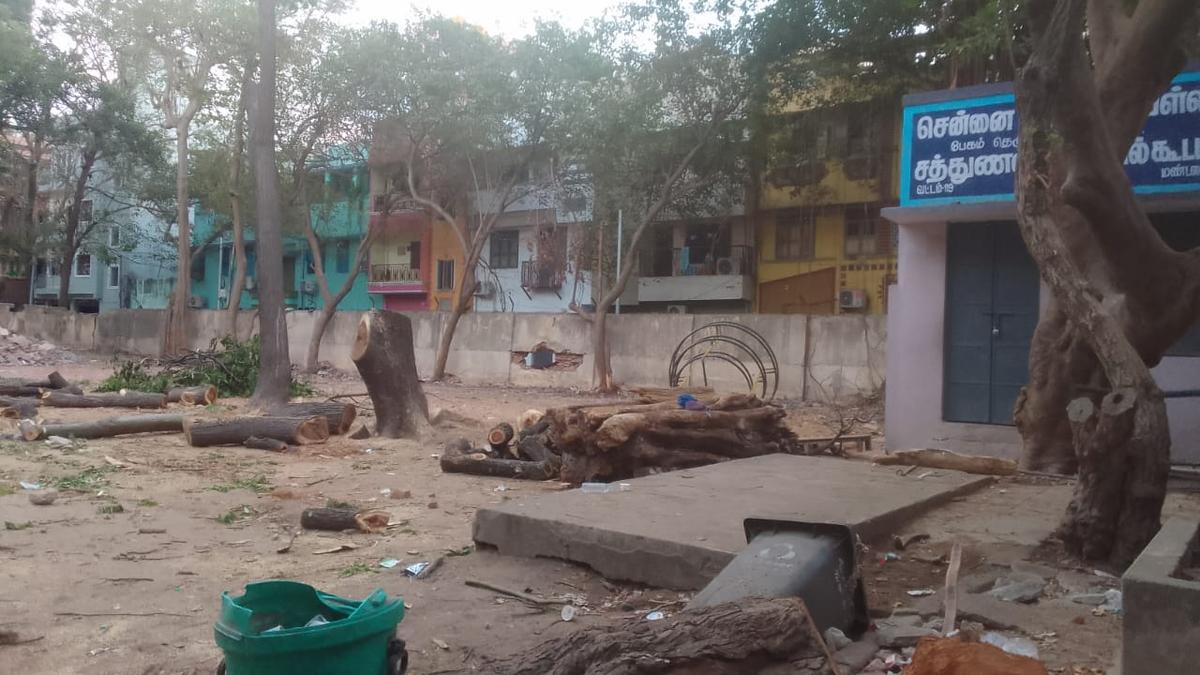
Seeing a tree being cut unlawfully? Here’s what you can do
The Hindu
Prompt reporting of tree abuse alone can help forums created for the protection of trees effective. Here are case studies from Chennai
Every day, on a reasonably long commute, one is likely to come across at least one tree “snuffed out” to extend or “free” what lies around it. Often, the act would come across as unjustified.
Nothing has captured this disturbingly continuing trend as powerfully as the fall of a mighty boabab on Chennai soil in 2021. Parked at a petrol station in Greams Road, its genesis predating the facility by at least a couple of hundred years, the boabab found its branches lopped off, purportedly to prevent it from being an “obstruction”. Shorn of its branches, the tree lost its “balance”, destabilised, and within a week, fell on the petrol station. The dramatic denouement seemed to signify delivery of natural justice and given that man-made systems seldom deliver the justice due to trees, it brought some solace to the heart.
Greater Chennai Corporation’s fine amount for abusing and defacing trees has legs to cover thousands of rupees, but is plonked like a couch potato on the paper that notified it. As anyone with eyes to see would know, signboards and lights continue to be hung on trees.
The sound of a lone tree falling deep within a forest may go unheard, but the sound of a tree in a city square axed unfairly and falling to the ground should reverberate and shake up our civic consciousness. But it does not. Oftentimes, a tree would disappear from the scene without as much as a thud, as the “noise” does not carry to the forums designed for its protection.
Removal of any tree is only seldom brought to the District Green Committee’s (DGC) notice, says one of its members. “Before the inception of the District Green Committee, the Greater Chennai Corporation (GCC) was penalising the offenders up to ₹10,000. After DGC’s inception, there was one commercial establishment in Vannanthurai, Adyar, which was penalised ₹50,000 for unauthorised heavy pruning of the tree in a public space,” says T.D. Babu, member of the Chennai District Green Committee. “That was the highest penalty for an offence against a tree within Corporation limits. After that, no penalty has been collected, even for unauthorised removal of trees. Both private and government agencies continue to fell trees almost on a daily basis without any fear, as there is no penalty levied.” says Babu. “Only a few come to our notice, and many go unnoticed.”
Recently, a local resident informed the District Green Committee (DGC) that Chennai Middle School on Begum Sahib Street in Royapettah had cut down many trees on its premises without any permission.
Babu further adds that last month, another case came to light, in which a Pungam tree (Pongamia Pinnata) next to a bus stop in Adambakkam (ironically near a Corporation ward office) was reduced to its trunk in an act that was clearly unjustified and arbitrary.

“Writing, in general, is a very solitary process,” says Yauvanika Chopra, Associate Director at The New India Foundation (NIF), which, earlier this year, announced the 12th edition of its NIF Book Fellowships for research and scholarship about Indian history after Independence. While authors, in general, are built for it, it can still get very lonely, says Chopra, pointing out that the fellowship’s community support is as valuable as the monetary benefits it offers. “There is a solid community of NIF fellows, trustees, language experts, jury members, all of whom are incredibly competent,” she says. “They really help make authors feel supported from manuscript to publication, so you never feel like you’re struggling through isolation.”

Several principals of government and private schools in Delhi on Tuesday said the Directorate of Education (DoE) circular from a day earlier, directing schools to conduct classes in ‘hybrid’ mode, had caused confusion regarding day-to-day operations as they did not know how many students would return to school from Wednesday and how would teachers instruct in two modes — online and in person — at once. The DoE circular on Monday had also stated that the option to “exercise online mode of education, wherever available, shall vest with the students and their guardians”. Several schoolteachers also expressed confusion regarding the DoE order. A government schoolteacher said he was unsure of how to cope with the resumption of physical classes, given that the order directing government offices to ensure that 50% of the employees work from home is still in place. On Monday, the Commission for Air Quality Management in the National Capital Region and Adjoining Areas (CAQM) had, on the orders of the Supreme Court, directed schools in Delhi-NCR to shift classes to the hybrid mode, following which the DoE had issued the circular. The court had urged the Centre’s pollution watchdog to consider restarting physical classes due to many students missing out on the mid-day meals and lacking the necessary means to attend classes online. The CAQM had, on November 20, asked schools in Delhi-NCR to shift to the online mode of teaching.









